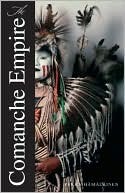More on this book
Community
Kindle Notes & Highlights
By the early 1870s this kind of total warfare against entire populations was an established practice in the U.S. Army. Sherman had pioneered it against the Confederacy
This success convinced the army that targeting civilians and economic resources was the most efficient—and since it shortened the conflict, the most humane—way to subdue the Indians.
It was only now, twenty-three years after the Treaty of Guadalupe Hidalgo, that Comanches came to feel the depth of the United States’ expansionist power.
Whatever difficulties the army may have faced in mobilizing soldiers for Indian wars, the troops that were mustered could draw on their nation’s enormous resources—superior technology; bottomless supply lines; an elaborate communication
Avoiding direct engagements, Mackenzie wore down the Comanches by disrupting their seasonal cycle of activities. Constantly on the move, Comanches did not have the time to pasture and tend their horses, hunt buffalo, dry the meat, and prepare hides for winter lodges.
In 1870 tanners in Philadelphia perfected a chemical process for turning bison hides into elastic industrial leather suitable for making machine belts, an innovation that unlocked the plains bison for industrial exploitation.
Calling themselves buffalo runners, these professional hunters centered their operations on the central plains, which had been recently cleared of Cheyennes and were connected to the eastern markets by the Kansas Pacific Railroad. The slaughter was immense and wasteful, and by the end of 1872 the central plains were almost devoid of buffalo.
out numerous times in the course of the United States’ westward expansion, they embraced eschatological visions and pan-Indian resistance to keep their world from dying.
The catalyst was Isatai, a young Kwahada medicine man. His message, delivered to him through a powerful vision, was at once symbolic and pragmatic, blending a religious prophecy with a political agenda, and it bore a striking resemblance to the Ghost Dance movement that would sweep the Great Plains fifteen years later.
In early June the Indians performed the Sun Dance, and within days, the revival movement reached the Cheyennes and Arapahoes at the Darlington agency. By mid-June, some seven hundred warriors and their families had gathered on Elk Creek to eradicate the whites and reclaim their lives.
twenty-eight hunters and one woman, the Indians soon lost their momentum against the complex’s thick log-and-sod walls and the hunters’ long-range, rapid-fire buffalo rifles.
some two thousand Comanches and Kiowas were still on the plains. Generals Sheridan and Sherman sent in five columns, some fourteen hundred soldiers
On September 28, 1874, Tonkawa scouts led Mackenzie’s Fourth Cavalry to the upper end of the Palo Duro Canyon, a wide, forty-five-mile-long crevasse at the north end of Comanches’ panhandle refuge.
The body count after the battle of the Palo Duro Canyon revealed only three dead Comanches.
the early 1870s, the Comanches suffered only a few hundred casualties, yet their population plummeted from four or five thousand in 1870 to around fifteen hundred in 1875.38
The parallels between the Comanches and other imperial powers are compelling. The Comanche empire was built on conquest—its rise marked the obliteration of the centuries-old Apache civilization from the Great Plains—and at its peak it was a prodigious creation with an enormous, at times hemispheric reach.
Pastoralism also entangled Comanches in antagonistic relations with bordering agricultural societies.
But the resource Comanche pastoralists desired most was labor. They needed a constant supply of herders and other pastoral laborers to maintain their herds, which eventually spurred them to create several successive slaving frontiers:
Thus, like the Mongols and other nonsedentary imperial powers, Comanches did not seek to absorb other polities into a single imperial framework. On the contrary, to flourish as hunters and pastoralists, they needed viable agricultural societies on their borders to guarantee a secure access to carbohydrates, livestock,
democratization in New Mexico. Pulled together by shared anxieties over Comanche power politics, Spanish colonists and Pueblo Indians embraced in the eighteenth century a mode of coexistence that manifested itself in an increasing number of intermarriages and (officially forbidden) mixed settlements.
century after Iroquois expansion had forced Algonquin Indians and the French to enter a middle ground in the Great Lakes region, Comanche expansion spawned an embryonic common ground between the Utes and northwestern New Mexico.
If Mexico City was losing its hold on New Mexico by the time of Mexico’s independence, to all intents and purposes it lost Texas in 1825, when the state of Coahuila y Texas opened its borders to American immigrants. That momentous decision was influenced by several factors, but key among them was an acute need to recolonize the border regions of Texas that had become almost vacant under Comanche raiding during the early nineteenth century.


